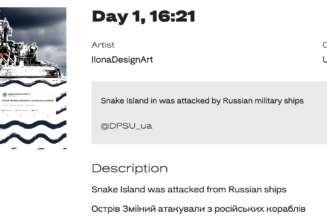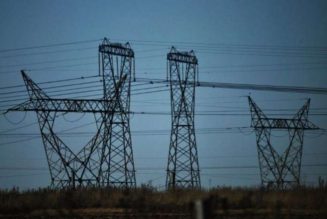There are no federal limits for how much 1,4-Dioxane can be in drinking water, though New Jersey is proposing new rules that would limit the chemical to .33 parts per billion. Some samples from 2020 found nearly 10 times that amountin the Delaware. New Jersey officials have said they believe those levels ultimately did not “pose any immediate health risk,” by the time drinking water reached customers.
Officials from across the region, including the Delaware River Basin Commission, the multi-state agency tasked with looking after the river, set up a group to track down the source of the contamination.
Though their work continues, it comes with an unsatisfying twist: Someone clearly sent the chemical into the river, but it’s not clear whether anyone will face consequences for polluting one of the country’s major water supplies.
Some chemicals, including 1,4-Dioxane, remain largely unregulated. And even as New Jersey’s Department of Environmental Protection is preparing for the first time to set strict limits on the amount of 1,4-Dioxane allowed in drinking water, it seems unlikely those rules would have prevented the Delaware River contamination.
New Jersey’s planned rules require drinking water suppliers to look for and remove most of the chemical from drinking water — but the rules don’t do more to keep polluters from putting it there in the first place.
The Delaware River incident highlights the extent to which drinking water suppliers are often on the hook for cleaning up other people’s problems, even as New Jersey American is expanding its treatment process to handle 1,4-Dioxane and other contaminants, like other “forever chemicals” the public only recently understood are unsafe.
A big part of figuring out where the pollution was coming from fell to Matt Csik, the top water quality official for New Jersey American Water. He needed to know how a likely carcinogen was getting into the river and threatening his customers’ water. In a watershed that stretches from the Catskill Mountains to Rehoboth Beach, Del., that was a challenge.
So, in October 2020, Csik put on his wetsuit and started taking water samples from the Delaware.
His sampling suggested the chemical was in water coming from one of the Delaware’s main tributaries, the Lehigh River, which cuts through Pennsylvania before dumping into the Delaware.
“It was pretty clear to me at that point that we had at least the smoke to tell us where the fire could be,” Csik said in an interview.
Csik’s work helped narrow down where the larger regional search party would look and ultimately find the chemical — near a wastewater treatment plant in Allentown, Pa., operated by the Lehigh County Authority. A sample taken from the Lehigh River near the treatment plant found levels of 1,4-Dioxane more than 100 times higher than what New Jersey‘s proposed rules would say is safe to drink.
The Allentown plant takes wastewater, cleans it up, then discharges it into the Lehigh at a point right before where the Lehigh empties into the Delaware. The plant handles chemicals on a federal priority list, but 1,4-Dioxane isn’t one of them, and the plant hadn’t studied how to treat it. That makes 1,4-Dioxane one of thousands of potentially harmful chemicals that are not an official priority for federal regulators, even though they have already determined long term exposure to it may cause kidney and liver damage.
“We weren’t looking for it and didn’t know to look for it,” Liesel Gross, the CEO of the Lehigh County Authority said in an interview.
But now the plant needed to find out who was sending it wastewater laced with 1,4-Dioxane.
Most people know wastewater treatment plants handle what comes to them through sewage systems. But some plants, including the one in Allentown, have lucrative side businesses accepting waste from outside haulers.
The Lehigh County Authority, a public agency run by local officials, received about $2.9 million in 2020 treating all kinds of hauled waste, including $38,000 from Coim USA, Gross said in an email. Coim which had been sending some wastewater to the Allentown plant Pennsylvania since 2018 from its polymer manufacturing facility in West Deptford, N.J.
Coim is an Italian polymer and plastics maker, and 1,4-Dioxane is one of its byproducts.
According to regulatory filings Coim submitted to the federal Environmental Protection Agency, the company should have been sending waste containing 1,4-Dioxane to an incinerator near Niagara Falls, N.Y.
But when the Allentown treatment plant conducted tests in June 2021 to find who was bringing 1,4-Dioxane to its facility, it found Coim was the “main contributor.”
The treatment plant immediately stopped accepting Coim’s waste and the amount of 1,4-Dioxane in the Delaware dropped, according to officials from New Jersey American Water and the Pennsylvania Department of Environmental Protection, both of which have the results from subsequent water samples in the Lehigh and Delaware rivers.
Coim USA’s president, Michelangelo Cavallo, denied responsibility for polluting the river and said the June test that found 1,4-Dioxane in the wastewater it was sending to Pennsylvania was the result of an accident. That time — and that time only, Cavallo said — the company mixed up the tank it was sending to the Allentown plant with the one meant for the incinerator in Niagara Falls.
“It was a simple mistake,” Cavallo said in an interview. “Never happened in the past and … it will not happen in the future.”
Regulators haven’t taken any formal action against anyone involved in the incident.
The EPA requires plants like the one in Pennsylvania to test for about 130 different chemicals, out of what experts say are thousands of industrial chemicals that can end up in wastewater. After a plant tests for what they have to, they have little insight into what else might be is going into their facilities — or what might be is coming out.
“In this case, if there are not regulations that prevent a thing from occurring, the thing can occur,” said Shawn LaTourette, New Jersey’s top environmental regulator. “I think the public has a really hard time with this, and understandably so.”
Tracy Carluccio, deputy director of the nonprofit Delaware Riverkeeper Network, said failing to test for pollutants is long-standing problem along the river.
“But ignorance is not bliss, and this is no excuse for pollution,” she said.
Work is continuing to track down other sources of 1,4-Dioxane in different parts of the Delaware, though New Jersey American’s sampling shows the primary source of the chemical threatening its supplies has substantially gone away since last summer.
Csik, New Jersey American’s water quality official, said the utility was fortunate to have a treatment process that helped remove 1,4-Dioxane and is getting ready to add another treatment process that further removes the chemical.
This is not the first time 1,4-Dioxane has threatened New Jersey drinking water. Several years ago, the federal government asked large water suppliers throughout the country to test for the chemical. About a tenth found some level of 1,4-Dioxane, but nearly a quarter of New Jersey suppliers found it, including about 30 drinking water systems that had levels of the chemical at or above what would be allowed under the state’s newly-proposed proposed rules.
Tom Neltner, the chemicals policy director of the Environmental Defense Fund, a nonprofit group, said incidents like the one in the Delaware are pretty common, though the details are rarely reported. Tracking down the unusual toxic trail can be difficult and municipal wastewater treatment plants, like the one in Allentown, may not know what industrial polluters are sending them.
He said the Safe Drinking Water Act, the key law that protects Americans’ drinking water, may be ill-suited for a world where potent and robust chemicals, like the 1,4-Dioxane found in the Delaware River, can come from far away and be dangerous in tiny amounts.
“In many ways, we use the Safe Drinking Water Act as a cleanup program, to clean up the water that never should have been contaminated in the first place,” Neltner said in an interview, “instead of trying to prevent it from being contaminated in the first place.“
[flexi-common-toolbar] [flexi-form class=”flexi_form_style” title=”Submit to Flexi” name=”my_form” ajax=”true”][flexi-form-tag type=”post_title” class=”fl-input” title=”Title” value=”” required=”true”][flexi-form-tag type=”category” title=”Select category”][flexi-form-tag type=”tag” title=”Insert tag”][flexi-form-tag type=”article” class=”fl-textarea” title=”Description” ][flexi-form-tag type=”file” title=”Select file” required=”true”][flexi-form-tag type=”submit” name=”submit” value=”Submit Now”] [/flexi-form]









